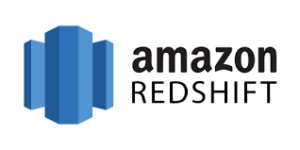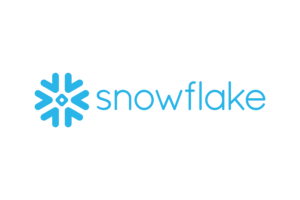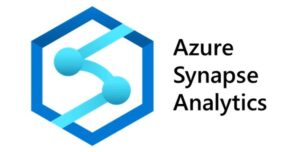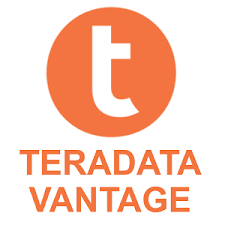If you buy using links on this page, we may earn a referral fee.
In the era of big data, efficiently managing and analyzing vast amounts of information is essential for any business. A data warehouse serves as a centralized hub where data from various sources is stored, making it easier to perform complex queries and generate insightful reports.
Data warehouses are vital because they integrate data from multiple sources, ensuring consistency and accessibility. This improves data quality and speeds up retrieval times, which is crucial for timely analysis.
For data analysts, data warehouses are indispensable. They provide a stable environment for in-depth analysis, helping to uncover trends and derive actionable insights. With the right tools, analysts can transform raw data into valuable information, driving better business decisions.
In this article, we’ll review some of the top data warehouse tools available today. We’ll explore their features, benefits, and how they can help you enhance your analytics capabilities.
Amazon Redshift
A Comprehensive Data Warehouse Solution. Amazon Redshift is a powerful, fully managed data warehouse service from Amazon Web Services (AWS). It is designed to handle large-scale data analysis, making it an ideal choice for businesses looking to derive insights from vast amounts of data.

Key Features of Amazon Redshift:
- Massively Parallel Processing (MPP): Redshift uses MPP technology to distribute and process queries across multiple nodes, ensuring high performance and scalability
- Columnar Storage: Data is stored in columns rather than rows, optimizing query performance and reducing I/O operations
- Scalability: Easily scale your data warehouse up or down based on your needs, from a few hundred gigabytes to petabytes
- Redshift Spectrum: Query data directly from Amazon S3 without having to load it into Redshift, providing flexibility and cost savings
- Security: Data is encrypted both in transit and at rest, with options for VPC, IAM roles, and AWS KMS integration
- Integration: Seamlessly integrates with other AWS services like S3, EMR, and Kinesis, as well as third-party tools
Pros
- High scalability: Easily scales storage and compute resources as needed.
- Quick query processing: Optimized for fast, complex query execution.
- Seamless AWS integration: Works smoothly with other Amazon Web Services.
- Columnar storage: Reduces disk I/O for faster data retrieval.
- Cost-effective pricing: Offers competitive pricing for large data volumes
Cons
- Initial setup complexity: Requires time and expertise to configure properly.
- Limited SQL support: Some advanced SQL features may be lacking.
- Performance degradation: May slow down with high concurrency workloads.
Pricing
Amazon Redshift offers flexible pricing models:
On-Demand Pricing: Pay for the hours your clusters run, with no upfront costs
Reserved Instances: Commit to a one- or three-year term for significant discounts
Serverless Option: Pay only for the compute capacity you use, ideal for unpredictable workloads
Best For: Large-scale analytics and integration with the AWS ecosystem.
Ideal Users: Data analysts, data engineers, and large enterprises.
Amazon Redshift stands out as a robust, scalable, and cost-effective data warehousing solution. Its integration with the AWS ecosystem, high performance, and ease of use make it a popular choice for businesses of all sizes. However, potential users should be aware of its limitations, such as the lack of multi-cloud support and the complexity of its pricing model.
By leveraging Amazon Redshift, businesses can efficiently analyze large datasets, gain valuable insights, and drive data-driven decision-making
Google BigQuery
The Ultimate Data Warehouse for Data Analysis. Google BigQuery is a fully-managed, serverless data warehouse that enables super-fast SQL queries using the processing power of Google’s infrastructure. It’s designed to handle large-scale data analysis, making it an ideal choice for businesses looking to gain insights from their data efficiently.

Key Features of Google BigQuery :
- Serverless Architecture: No need to manage infrastructure. BigQuery scales automatically to handle your data and query load.
- Real-time Analytics: Perform real-time analysis on streaming data, enabling timely insights.
- High Performance: Leverage Google’s infrastructure for fast query execution, even on massive datasets.
- SQL Support: Use standard SQL to query your data, making it accessible for users familiar with SQL.
- Machine Learning Integration: Built-in support for BigQuery ML allows you to create and execute machine learning models directly within BigQuery.
- Data Security: Robust security features including encryption, identity and access management, and audit logs.
- Integration with Google Cloud: Seamlessly integrates with other Google Cloud services like Google Data Studio, Google Sheets, and Google Analytics.
Pros
- Serverless architecture: Eliminates infrastructure management, simplifying setup.
- Real-time data analytics: Handles data streaming for instant insights.
- Automatic scaling: Adapts resources dynamically to workload demands.
- Built-in machine learning: Integrates ML for advanced analytics within SQL.
- Cost-effective separation: Charges separately for storage and query processing.
Cons
- Learning curve: May be challenging for beginners to navigate.
- Data egress fees: Charges apply for exporting data out of BigQuery.
- Less control over optimization: Limited manual tuning options.
Pricing
Google BigQuery uses a pay-as-you-go pricing model. You are charged based on the amount of data stored and the amount of data processed by your queries. Here’s a brief overview:
Storage: $0.02 per GB per month.
Querying: $5 per TB of data processed.
Streaming Inserts: $0.01 per 200 MB.
There are also options for flat-rate pricing for high-volume users
Best For: Organizations utilizing the Google Cloud ecosystem.
Ideal Users: Data analysts, data scientists, and cloud architects.
Google BigQuery is a powerful, scalable, and cost-effective data warehouse solution that simplifies data analysis. Its serverless architecture, real-time analytics capabilities, and seamless integration with other Google Cloud services make it an excellent choice for businesses of all sizes. While there is a learning curve and cost management considerations, the benefits far outweigh the drawbacks, making BigQuery a top contender in the data warehousing space.
Snowflake
The Cloud Data Warehouse for Modern Data Analysis. Snowflake is a cutting-edge cloud data warehouse solution designed to handle the complexities of modern data analysis. It offers a unique architecture that separates storage and compute, allowing for unparalleled scalability and performance.

Key Features of Snowflake:
- Scalability: Snowflake’s architecture allows for independent scaling of storage and compute resources, ensuring optimal performance regardless of workload size.
- Data Sharing: Seamlessly share data across your organization or with external partners without the need for complex data pipelines.
- Multi-Cloud Support: Operate on AWS, Azure, or Google Cloud, providing flexibility and reducing vendor lock-in.
- Secure Data Handling: Advanced security features including end-to-end encryption, role-based access control, and compliance with industry standards.
- Zero Maintenance: Automated maintenance tasks such as backups, updates, and scaling, freeing up your IT team to focus on more strategic initiatives.
- Data Integration: Easily integrate with a wide range of data sources and tools, including ETL solutions, BI tools, and data lakes.
Pros
- Multi-cloud compatibility: Operates on AWS, Azure, and Google Cloud.
- Instant scalability: Adjusts resources in real-time for consistent performance.
- Data sharing capabilities: Allows secure, real-time data sharing across organizations.
- Robust security: Implements advanced security and compliance features.
- Handles semi-structured data: Supports structured and semi-structured data seamlessly.
Cons
- Complex pricing model: Requires careful planning to manage costs effectively.
- Latency potential: Performance may vary with data replication across regions.
- Steep learning curve: Advanced features may require dedicated training.
Pricing
Snowflake offers a flexible, consumption-based pricing model. Costs are determined by the amount of data stored and the compute resources used. This model allows businesses to scale their usage up or down based on their needs, ensuring cost efficiency. Snowflake also provides a free trial and various pricing tiers to accommodate different business sizes and requirements.
Best For: Organizations needing elasticity and multi-cloud capabilities.
Ideal Users: Data engineers, analysts, and IT teams.
Snowflake stands out as a powerful and versatile data warehouse solution, ideal for businesses looking to harness the power of their data. Its unique architecture, robust feature set, and flexible pricing make it a top choice for modern data analysis. Whether you’re a small startup or a large enterprise, Snowflake can help you unlock insights and drive data-driven decision-making.
Microsoft Azure Synapse Analytics
The Ultimate Data Warehouse Tool for Data Analysis. Microsoft Azure Synapse Analytics is a cutting-edge data warehouse tool designed to revolutionize data analysis. It seamlessly integrates big data and data warehousing, providing a unified experience to ingest, prepare, manage, and serve data for immediate business intelligence and machine learning needs.

Key Features of Microsoft Azure Synapse Analytics:
- Unified Analytics Platform: Combines big data and data warehousing into a single, cohesive platform.
- Serverless and Provisioned Options: Offers both serverless on-demand and provisioned resources, giving you flexibility in managing workloads.
- Integrated AI and Machine Learning: Built-in support for AI and ML models to enhance data insights.
- Advanced Security: Comprehensive security features including data encryption, network isolation, and threat detection.
- Scalability: Easily scales to handle large volumes of data without compromising performance.
- Data Integration: Seamlessly integrates with various data sources, including Azure Data Lake Storage, Power BI, and more.
Pros
- Integrated data and analytics: Combines big data and data warehousing in one platform.
- Serverless and dedicated options: Flexibility to match different workloads.
- Enhanced security: Comprehensive encryption and compliance support.
- Strong data integration: Works well with Azure services and external sources.
- Optimized for performance: Efficiently handles complex queries for fast insights.
Cons
- Complex initial setup: Requires expertise for effective configuration.
- High learning curve: Advanced features may need in-depth training.
- Cost tracking: Managing costs can be challenging with diverse service options.
Pricing
Azure Synapse Analytics offers a flexible pricing model based on usage. It includes:
Serverless SQL Pool: Pay per query, ideal for ad-hoc analysis.
Provisioned SQL Pool: Pay for reserved resources, suitable for predictable workloads
Data Integration: Pay for data movement and orchestration.
For detailed pricing, it’s best to refer to the official Azure Synapse Analytics pricing page.
Best For: Organizations needing elasticity and multi-cloud capabilities.
Ideal Users: Data engineers, analysts, and IT teams.
Microsoft Azure Synapse Analytics stands out as a powerful, flexible, and scalable data warehouse tool. It bridges the gap between big data and data warehousing, offering a unified platform for comprehensive data analysis. While it may have a steep learning curve and higher costs, its robust features and seamless integration with other tools make it an invaluable asset for businesses aiming to leverage data for strategic insights.
IBM Db2 Warehouse
Your Ultimate Data Analysis Tool. IBM Db2 Warehouse is a powerful, software-defined data warehouse designed for private and virtual clouds. It leverages Docker container technology to provide a flexible, scalable, and high-performance environment for data analysis. Whether you’re dealing with massive datasets or complex queries, Db2 Warehouse is built to handle it all with ease.

Key Features of IBM Db2 Warehouse:
- In-Memory Analytics: Accelerate your data processing with in-memory columnar technology.
- Built-in Machine Learning: Integrate advanced analytics directly into your data warehouse.
- Continuous Data Ingestion: Ensure low-latency analytics with real-time data ingestion.
- Always-On Security: Benefit from robust security features, including encryption and automated backups.
- Flexible Deployment: Deploy on-premises, in private clouds, or on public cloud platforms like IBM Cloud, AWS, and Microsoft Azure.
Pros
- Flexible deployment options: Supports on-premises and cloud deployments.
- Real-time analytics: Optimized for instant analysis of large data sets.
- Strong integration: Connects well with other IBM tools and cloud solutions.
- High scalability: Scales to meet the needs of large enterprises.
- Advanced security features: Ensures data protection with robust compliance options.
Cons
- Complex setup process: Initial configuration can be time-intensive.
- Pricing model complexity: Pricing can be difficult to understand and predict.
- Less cloud compatibility: Primarily suited for IBM Cloud and limited multi-cloud support.
Pricing
IBM Db2 Warehouse offers a usage-based, flexible pricing model suited for various workload requirements. It includes:
Hourly Pricing: Pay-as-you-go based on vCPU and storage usage, ideal for variable workloads.
Reserved Instances: Discounts available for one- or three-year commitments, optimizing costs for stable workloads.
Storage Options: Separate charges for block storage (starting at $1.58 per TB-hour) and object storage ($0.05 per TB-hour).
Dedicated Compute: Pricing for dedicated resources, starting at approximately $1,373 per month.
Best For: Enterprises with complex data needs.
Ideal Users: Data scientists, analysts, and IT professionals
IBM Db2 Warehouse is a robust and versatile data warehouse solution that excels in performance, scalability, and advanced analytics. It’s ideal for businesses looking to leverage real-time data insights and machine learning capabilities. While it may come with a higher price tag, its comprehensive features and flexibility make it a worthwhile investment for serious data-driven enterprises.
Teradata Vantage
The Comprehensive Data Warehouse for Advanced Analytics. Teradata Vantage is a robust, enterprise-grade data warehouse solution designed to handle complex data analytics at scale. It integrates multiple data types and analytics engines, providing a unified platform for comprehensive data analysis.

Key Features of Teradata Vantage:
- Unified Data Analytics: Combines data lakes, data warehouses, and analytics into a single platform.
- Scalability: Easily scales to accommodate growing data volumes and user demands.
- Advanced Analytics: Supports a wide range of analytics, including predictive, prescriptive, and descriptive analytics.
- Multi-Cloud Flexibility: Deployable on-premises, in the cloud, or in a hybrid environment.
- SQL and Beyond: Supports SQL, R, Python, and other languages for diverse analytical needs.
- Integrated Data Management: Comprehensive tools for data integration, management, and governance.
- High Performance: Optimized for high-speed data processing and query performance.
Pros
- Scalable architecture: Easily accommodates growing data demands with high efficiency.
- Multi-cloud support: Works seamlessly across AWS, Azure, and Google Cloud.
- Advanced analytics capabilities: Offers robust tools for in-depth analysis.
- Real-time data processing: Ensures immediate insights from streaming data.
- Flexible deployment options: Available on-premises, in the cloud, or hybrid.
Cons
- Complex setup requirements: Installation and configuration can be time-consuming.
- High operational costs: Advanced features may be costly for small businesses.
- Steep learning curve: New users may find it challenging to master.
Pricing
Teradata Vantage offers flexible pricing models, including consumption-based pricing and subscription options. Pricing can vary significantly based on deployment options (on-premises, cloud, hybrid) and specific use cases. Here’s a general overview:
Consumption-Based Pricing: Pay for the resources you use, typically measured in terms of compute and storage.
Subscription Pricing: Fixed monthly or annual fees based on the chosen service tier and resource allocation.
For precise pricing, it’s best to contact Teradata directly or consult their pricing calculator.
Best For: Large organizations needing advanced analytics capabilities.
Ideal Users: Data engineers, analysts, and BI teams.
Teradata Vantage stands out as a powerful and versatile data warehouse solution, ideal for enterprises needing advanced analytics capabilities. Its unified platform, high performance, and flexibility make it a top choice for handling complex data environments. While it may require a steep learning curve and can be costly, the comprehensive features and scalability it offers make it a valuable investment for businesses aiming to leverage their data for strategic insights.
Panoply
Simplifying Data Analysis with Seamless Data Warehousing. Panoply is an intuitive cloud data warehouse solution designed to streamline data analysis for businesses of all sizes. With its user-friendly interface and automated data integration capabilities, Panoply makes it easy to collect, store, and analyze data without the need for extensive technical expertise.

Key Features of Teradata Vantage:
- Automated Data Integration: Panoply automatically ingests data from a wide range of sources, including databases, APIs, and cloud services, reducing the need for manual data wrangling.
- Scalability: Easily scale storage and compute resources to match your data needs, ensuring optimal performance as your data grows.
- Built-In ETL: Simplifies the extract, transform, load (ETL) process with built-in tools that automate data preparation and transformation.
- User-Friendly Interface: Designed with non-technical users in mind, Panoply offers an intuitive interface that makes it easy to manage and analyze data.
- Real-Time Data Sync: Keep your data up-to-date with real-time syncing capabilities, ensuring you always have access to the latest information.
- Advanced Analytics: Integrate with popular BI tools like Tableau, Looker, and Power BI to perform advanced analytics and create insightful visualizations.
Pros
- Quick setup: Easily accessible and fast to configure for new users.
- Automated data integration: Simplifies connecting with multiple data sources.
- User-friendly interface: Designed to be intuitive and easy to navigate.
- Scalable storage: Expands data storage capabilities as needed.
- SQL editor included: Supports SQL for querying and managing data.
Cons
- Limited advanced features: May lack some high-end analytical functions.
- Data transformation limitations: Limited ETL customization options available.
- Higher cost per user: Pricing can be costly for larger teams.
Pricing
Panoply offers a transparent, consumption-based pricing model. Costs are determined by the amount of data stored and the compute resources used. This model allows businesses to scale their usage based on their needs, ensuring cost efficiency. Panoply also provides a free trial and various pricing tiers to accommodate different business sizes and requirements.
Best For: Small to medium-sized businesses looking for simplicity.
Ideal Users: Business analysts, marketers, and non-technical users.
Panoply stands out as a user-friendly and efficient data warehouse solution, ideal for businesses looking to simplify their data analysis processes. Its automated data integration, scalability, and intuitive interface make it a top choice for small to medium-sized businesses. Whether you’re just starting with data warehousing or looking to streamline your existing processes, Panoply provides the tools and capabilities to help you make data-driven decisions with ease.
Cloudera Data Platform
Empowering Data Analysis with Enterprise-Grade Capabilities. Cloudera Data Platform (CDP) is a robust, enterprise-grade data warehouse solution designed to meet the demands of modern data analysis. It combines the best of open-source technology with advanced security and governance features, providing a comprehensive platform for managing and analyzing data at scale.

Key Features of Cloudera Data Platform:
- Hybrid and Multi-Cloud Flexibility: CDP supports deployment across on-premises, public cloud, and hybrid environments, offering unparalleled flexibility and reducing vendor lock-in.
- Unified Data Management: Integrates data engineering, data warehousing, machine learning, and analytics into a single platform, streamlining workflows and improving efficiency.
- Advanced Security and Governance: Features such as data encryption, role-based access control, and comprehensive auditing ensure data security and compliance with industry regulations.
- Scalability: Easily scale resources up or down based on workload demands, ensuring optimal performance and cost efficiency.
- Data Lakehouse Architecture: Combines the best of data lakes and data warehouses, enabling both structured and unstructured data analysis.
- Machine Learning and AI Integration: Built-in tools for machine learning and AI allow for advanced analytics and predictive modeling.
Pros
- Comprehensive data management: Combines analytics, data processing, and storage.
- Multi-cloud compatibility: Runs on AWS, Azure, and private clouds.
- Secure environment: Strong focus on compliance and data security.
- Machine learning integration: Offers built-in tools for data science and AI.
- Scalable architecture: Adapts easily to growing data volume requirements.
Cons
- High resource consumption: Can be demanding on system resources.
- Complex setup process: Initial configuration requires advanced technical expertise.
- Expensive for small businesses: Pricing may be prohibitive for smaller teams.
Pricing
Cloudera Data Platform offers a subscription-based pricing model, with costs varying based on deployment type (on-premises, cloud, or hybrid) and the specific services utilized. Pricing is typically customized based on the organization’s needs, ensuring that businesses only pay for the features and resources they require. Cloudera also provides a free trial and various pricing tiers to accommodate different business sizes and requirements.
Best For: Organizations needing big data capabilities alongside traditional data warehousing.
Ideal Users: Data engineers, data scientists, and IT managers.
Cloudera Data Platform stands out as a powerful and versatile data warehouse solution, ideal for enterprises looking to harness the full potential of their data. Its comprehensive feature set, flexibility, and strong security make it a top choice for modern data analysis. Whether you’re managing large-scale data operations or seeking to integrate advanced analytics into your workflows, CDP provides the tools and capabilities to drive data-driven success.
Dremio
The Next-Generation Data Warehouse for Lightning-Fast Data Analysis. Dremio is a modern data warehouse platform designed to accelerate data analytics and simplify data access. By leveraging its unique Data Lake Engine, Dremio enables businesses to perform high-speed analytics directly on data lake storage, eliminating the need for complex ETL processes and reducing time-to-insight.

Key Features of Dremio:
- Data Lake Engine: Provides high-performance SQL analytics directly on data lake storage, such as AWS S3 and Azure Data Lake.
- Self-Service Data Access: Empowers users to explore and analyze data without relying on IT, thanks to its intuitive interface and powerful data virtualization capabilities.
- Reflections: Accelerates query performance by creating optimized, materialized views of frequently accessed data.
- Data Lineage and Governance: Ensures data accuracy and compliance with robust data lineage and governance features.
- Integration: Seamlessly integrates with popular BI tools like Tableau, Power BI, and Looker, as well as data science tools like Jupyter and RStudio.
- Elastic Scalability: Scales elastically to handle varying workloads, ensuring consistent performance.
Pros
- Self-service analytics: Empowers users to explore data without heavy IT involvement.
- Real-time querying: Delivers fast insights on live data without ETL delays.
- Cost-effective solution: Offers a free edition with core functionality.
- Data lake optimization: Built specifically for scalable data lake environments.
- Easy integration: Works well with popular BI tools like Tableau and Power BI.
Cons
- Limited data storage options: Primarily designed for data lakes, not data warehouses.
- High memory usage: May be resource-intensive for large datasets.
- Steep learning curve for beginners: Advanced functions can be challenging.
Pricing
Dremio offers a flexible pricing model based on usage and deployment. Pricing options include:
Consumption-Based Pricing: Pay for the resources you use, ideal for variable workloads.
Subscription-Based Pricing: Fixed pricing for predictable workloads, available for both on-premises and cloud deployments.
Best For: Organizations wanting faster data access and integration.
Ideal Users: Data analysts, data scientists, and BI professionals.
Dremio stands out as a next-generation data warehouse platform that accelerates data analytics and simplifies data access. Its unique Data Lake Engine delivers high-speed analytics directly on data lake storage, while its self-service capabilities empower users to explore and analyze data independently. Although it may have a steep learning curve and higher costs, its robust features and seamless integration with BI and data science tools make it an excellent choice for businesses looking to gain rapid insights from their data.
Vertica
The High-Performance Data Warehouse for Advanced Data Analysis. Vertica is a high-performance, scalable data warehouse solution designed to handle the most demanding data analytics workloads. Known for its speed and efficiency, Vertica enables businesses to gain deep insights from their data with unparalleled performance and scalability.
Key Features of Vertica:
- Columnar Storage: Optimizes query performance and storage efficiency by storing data in columns rather than rows.
- Massively Parallel Processing (MPP): Distributes data and query processing across multiple nodes to ensure high-speed analytics.
- Advanced Analytics: Built-in support for machine learning, time-series analysis, and geospatial analytics.
- In-Database Machine Learning: Allows data scientists to build and deploy machine learning models directly within the database.
- Hybrid Deployment: Supports on-premises, cloud, and hybrid environments, providing flexibility in deployment.
- Data Compression: Reduces storage costs and improves performance through advanced data compression techniques.
Pros
- Columnar storage: Optimizes for fast analytics on large datasets.
- High-performance query engine: Delivers low-latency responses to complex queries.
- Flexible deployment: Available on-premises, in the cloud, or as a hybrid solution.
- Advanced analytics support: Built-in machine learning and predictive analytics tools.
- Efficient data compression: Reduces storage costs while retaining performance.
Cons
- Limited third-party integrations: May not support some external data sources.
- High setup complexity: Configuration can be intricate and time-consuming.
- Costly for smaller organizations: Pricing may be steep for smaller users.
Pricing
Vertica offers a flexible pricing model based on deployment and usage. Pricing options include:
Consumption-Based Pricing: Pay for the resources you use, ideal for variable workloads.
Subscription-Based Pricing: Fixed pricing for predictable workloads, available for both on-premises and cloud deployments.
For detailed pricing information, it’s best to refer to the official Vertica pricing page.
Best For: Big data analytics and machine learning integration.
Ideal Users: Data scientists, data engineers, machine learning teams.
Vertica stands out as a high-performance, scalable data warehouse solution tailored for advanced data analysis. Its columnar storage and MPP architecture deliver exceptional query performance, while its support for advanced analytics and machine learning makes it a powerful tool for data-driven businesses. Although it may have a steep learning curve and higher costs, its robust features and flexibility in deployment make it an excellent choice for organizations looking to leverage their data for strategic insights.


